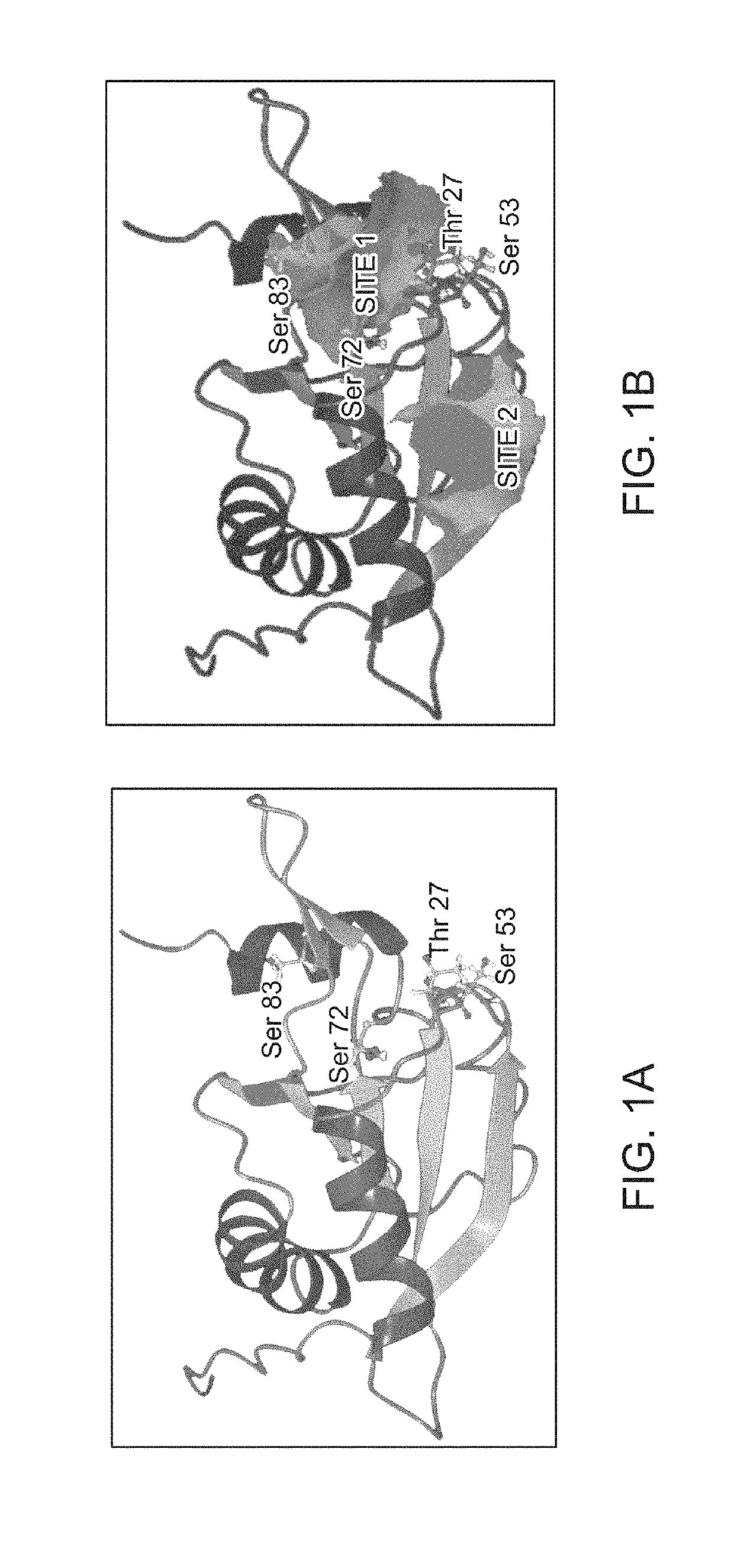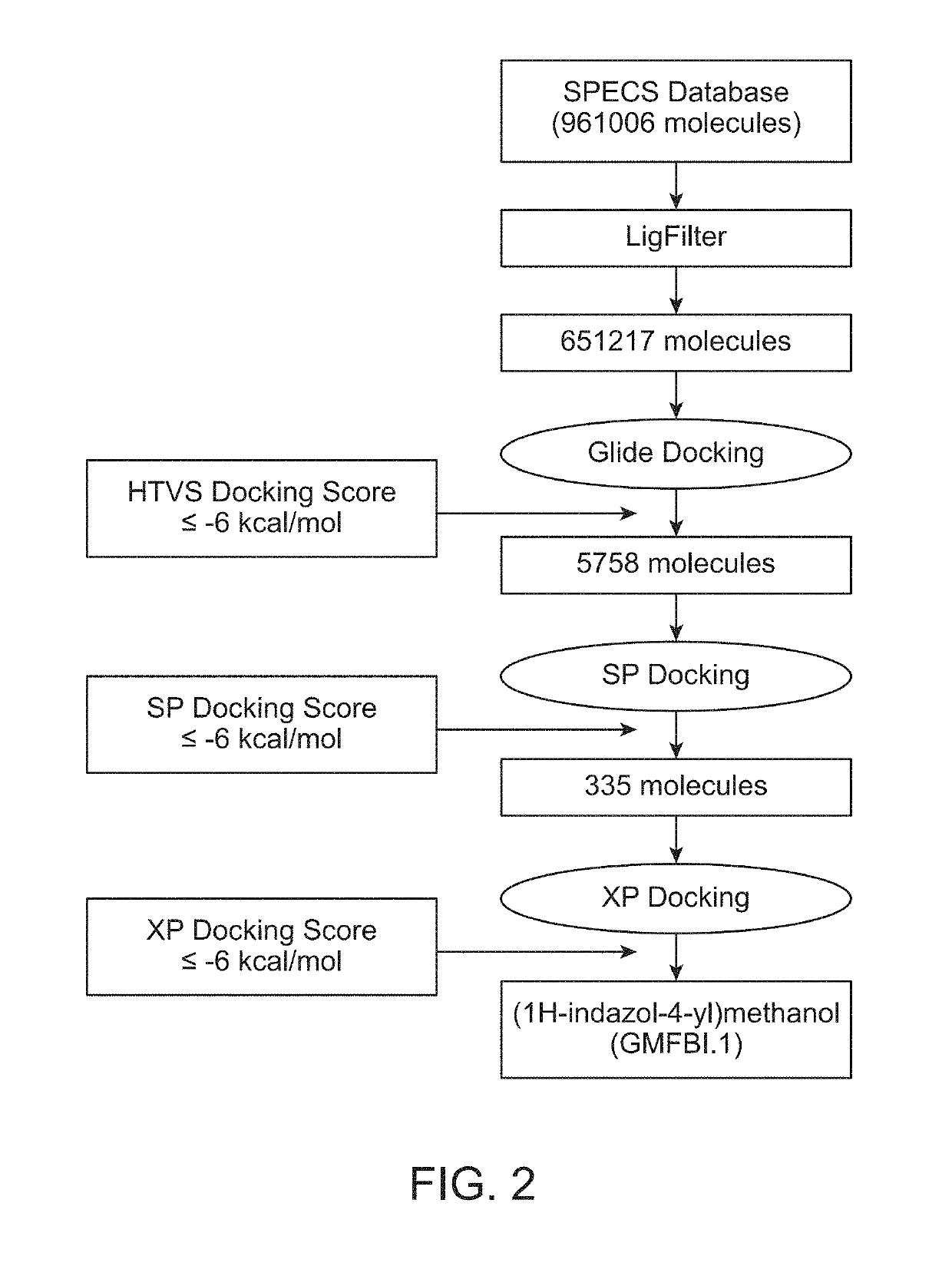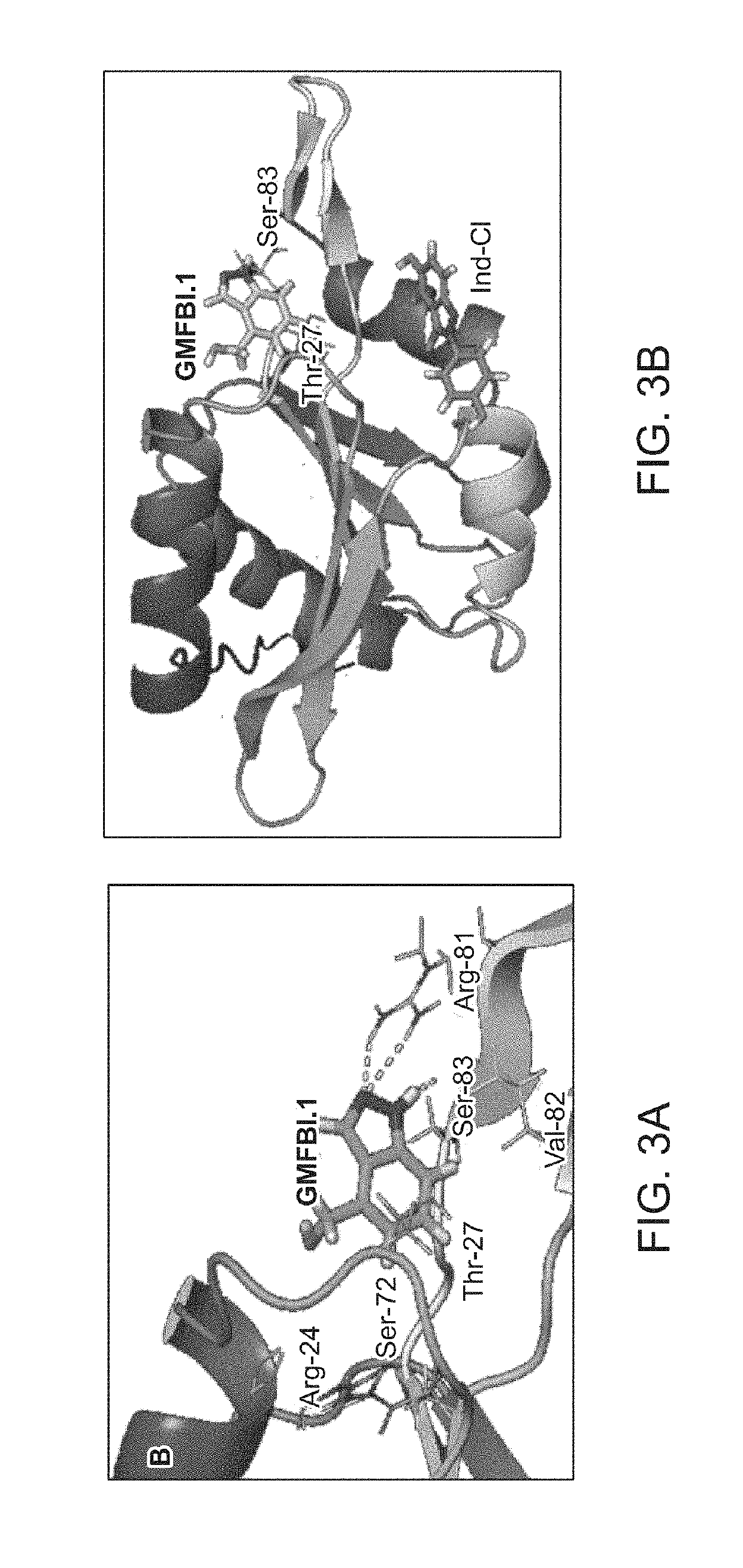Composition and method for treatment of diseases associated with central nervous system inflammation
a central nervous system and inflammation technology, applied in the field of central nervous system inflammation diseases, can solve the problems of demyelination and axonal damage, loss of axonal integrity, improper gait,
- Summary
- Abstract
- Description
- Claims
- Application Information
AI Technical Summary
Benefits of technology
Problems solved by technology
Method used
Image
Examples
example 1
Modeling of Human GMF-13 Protein for Structure-Based Inhibitor
[0076]A three dimensional (3D) structure of human GMF-β was developed using homology modeling technique. In order to develop this model amino acid sequence of human GMF-β was obtained in FASTA format from the NCBI protein sequence database (gi|4758442|ref| NP_004115.1). Basic local alignment search tool (BLAST) search against this query sequence was performed by choosing the protein data bank (PDB) in order to retrieve the best experimental 3D template structure for homology model development of human GMF-β protein. Murine GMF-β protein (PDB ID: 1V6F) structure was obtained as the best structure solved using NMR technique as the best hit having BLAST score of 274, E-value of 1e-94 and sequence identity of 98% respectively.
[0077]MODELLER 9v9, a computer program that models the 3D structure of proteins and their assemblies by satisfaction of spatial restrains was used for building the homology model of human GMF-β. The pred...
example 2
l Virtual Screening to Identify Potent and Safe Inhibitor
[0079]Inhibitor design studies were done for blocking the phosphorylation sites to suppress the downstream signaling mechanisms. An exemplary method to identify a potent and safe inhibitor (or blocker) against human GMF-β as shown in FIG. 2 involves a high-throughput sequential virtual screening (VS) technique using 961006 molecules from SPECS database. This method is used to identify best predicted small molecule against human GMF-β. Initial step of VS was Lipinski's rule of five followed by molecular docking based VS. Further, three different steps HTVS, SP and XP of glide molecular docking methodology screened (1-H indazole-4-yl) methanol, a small molecule GMFBI.1 with structure as represented in Table 1 as the best putative hit with XP docking score >−6 kcal / mol (BE). The structure, IUPAC name and properties of this molecule are given in Table 1 and the recommended range of properties of the molecule for treatment of disea...
example 3
ompound Binds to the Phosphorylation Sites of Human GMF-β with High Specificity In Silico
[0080]The computational study involves blocking the key phosphorylating residues of human GMF-β by other kinases, so that further downstream expression of astrocytic signaling proteins (p38 MAPK and NF-κB) would be suppressed and which would in turn prevent the proinflammatory response. The GMFBI.1 (1-H indazole-4yl methanol) compound made strong hydrogen bonding interactions and other non-bonded (van der Waals, hydrophobic) interactions towards the key residues Thr27, Arg81, Val82, Ser83 and Tyr84 of human GMF-β active site regions with high binding affinity (BE=−6.143 kcal / mol), as shown in FIGS. 3A and 3B. The molecule showed direct hydrogen bonding interaction with different key residues within the active site area of human GMF-β.
[0081]Hydrogen bonding interactions of amino acid residues (line representation) of GMF-β with GMFBI.1 (stick) compound was represented with yellow dotted lines and...
PUM
| Property | Measurement | Unit |
|---|---|---|
| Fraction | aaaaa | aaaaa |
| Speed | aaaaa | aaaaa |
| Dimensionless property | aaaaa | aaaaa |
Abstract
Description
Claims
Application Information
 Login to View More
Login to View More - R&D
- Intellectual Property
- Life Sciences
- Materials
- Tech Scout
- Unparalleled Data Quality
- Higher Quality Content
- 60% Fewer Hallucinations
Browse by: Latest US Patents, China's latest patents, Technical Efficacy Thesaurus, Application Domain, Technology Topic, Popular Technical Reports.
© 2025 PatSnap. All rights reserved.Legal|Privacy policy|Modern Slavery Act Transparency Statement|Sitemap|About US| Contact US: help@patsnap.com



